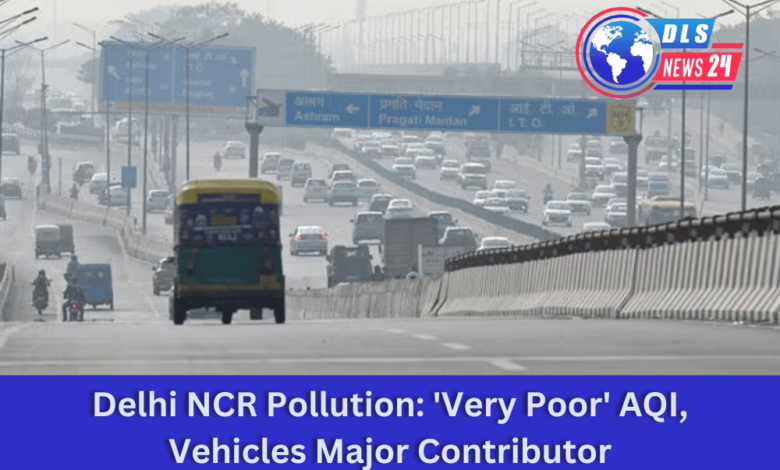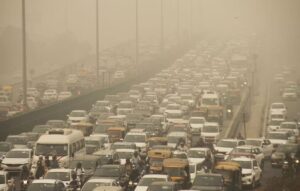
The air quality index in Delhi NCR is still very poor due to pollution. And the latest readings show that it falls in the very poor category. This is rather dangerous to the health of the residents particularly those with breathing problems.
From our understanding, the AQI quantifies air quality by adding up chemical toxicants in the air such as PM 2.5 and PM 10. If it goes to the ‘very poor’ level, health complications which are; asthma, heart diseases, and respiratory diseases come up.
Of the main causes of this declining air quality, emissions from automobiles have cropped up as some of the most relevant. As the populations rise/thrive, more cars are being used, and with traffic congestion especially during rush hours, automobile carbon emissions result from the cars, trucks, and buses sources.
With emissions from these crop burning, and construction dust, the AQI scores are touching the hazardous range impacting life across the region. Of these, there is a pressing need for early interventions to control these emissions and enhance the air quality to protect the people of Delhi NCR.

Delhi NCR’s Air Quality Crisis
Delhi NCR is a major victim of air pollution and the area frequently receives a ‘very poor’ AQI rating. This means the air within these concentrations contains dangerous pollutants such as PM2.5, PM10, nitrogen oxides, and carbon monoxide.
Most of these pollutants originate from separate sources; automobile emissions, industries, dust generated from building construction activities, and the burning of crops in neighboring states.
This means that this increased air pollution rate has implications for human health; particularly the children, the elderly, and the sick, those with respiratory and cardiovascular diseases.
All the people therefore having low-quality air are at risk of these diseases and other complicated serious illnesses that arise from the effects of polluted air in the long run.
This has led the government and environmental agencies to sound warnings about pollution. Call for measures to bring down pollution levels for example improving the public transport system, and checking emissions from vehicles among other actions that seek to discourage crop burning. If no immediate efforts are made, there will be a further deterioration of the air quality of Delhi NCR.

Impact Of AQI On Health
- Breathing Difficulties: HighAQI leads to right away respiratory irritation including difficulty breathing particularly in children, the elderly as well as those with asthmatic conditions.
- Asthma and Bronchitis: Asthma and bronchitis can be worsened when irritants, present in the air such as PM2.5 and PM10 particles, irritate the respiratory tract.
- Heart Disease Risk: This puts the citizens at atomic risk of severe heart diseases since AQI’s long-term pollutants such as nitrogen dioxide (NO2) and sulfur dioxide (SO2) act on blood vessels.
- Reduced Lung Function: Regular exposure to air pollution is likely to slowly reduce the lung capacity in children and adolescent populations.
- Weakened Immune System: These harmfully affect the immune system and make the human body vulnerable to diseases.
- Increased Mortality: Chronic exposure to elevated AQI is associated with higher rates of mortality on average. Particularly, it causes respiratory and cardiovascular diseases.
- Eye and Skin Irritation: Contaminants may also cause redness of the eyes, sore throat, and skin rashes hence making the population uncomfortable.

Government Initiatives To Tackle Pollution
The government has come up with several approaches that tackle pollution in Delhi NCR in both the short and long term. One blueprint is the ‘Graded Response Action Plan (GRAP)’: ‘if AQI escalates if air pollution becomes hazardous it involves restrictions on transport and other construction activities’.
Odd-Even Schemes govern the movement about and from central cities of automobiles, particularly for private utilization in an endeavor to curb car emissions on the roads.
In addressing emissions by automobiles, the ‘Electric Vehicle Policy’ seeks to replace the use of automobiles with electric automobiles and by so doing, it provides rebates on electric automobiles and charges for electric automobile recharging stations.
‘Delhi Green War Room’ is in charge of overseeing and responding instantly to changes in air quality.
Seasonal pollution is another important aspect of government concern by subsidizing machines such as the ‘Happy Seeders’ to manage crop residues and avoid burning them.
Also, different ‘tree plantation drives’ serve the purpose of enhancing tree cover and also serve as a technique for cleaning the air. Similarly, the ‘industrial regulations’ in the nation have been implemented to check emissions from industrially developed regions.




